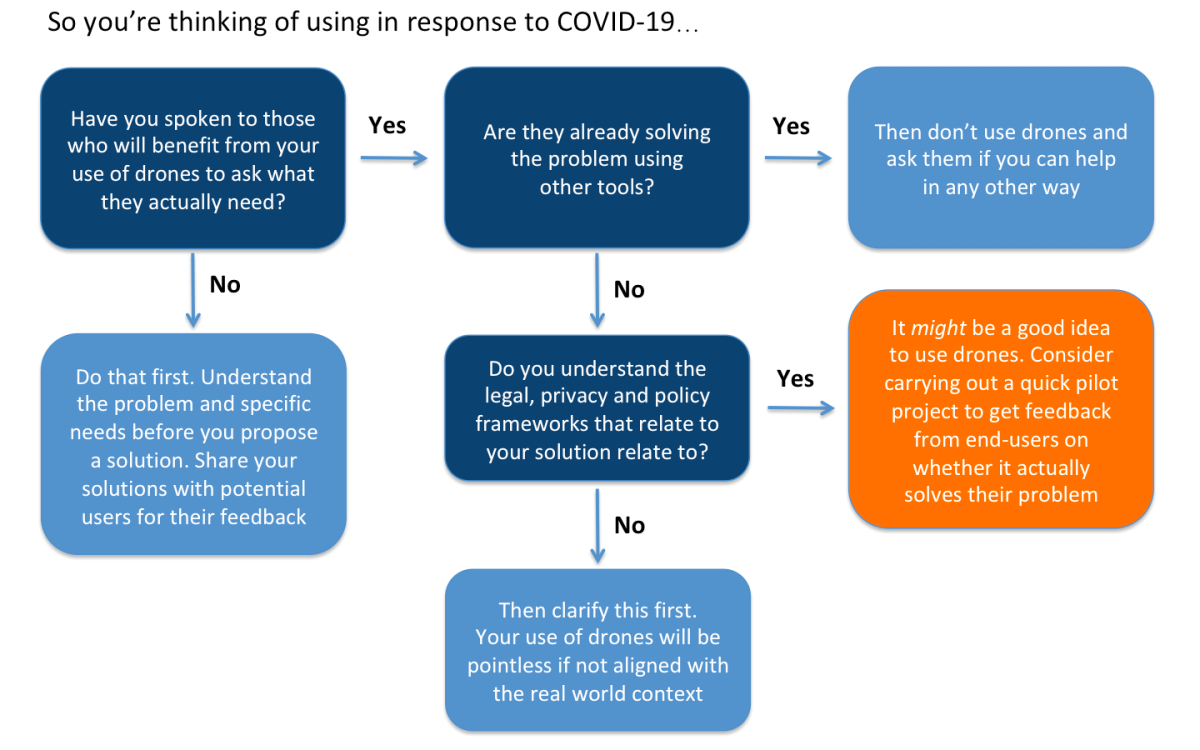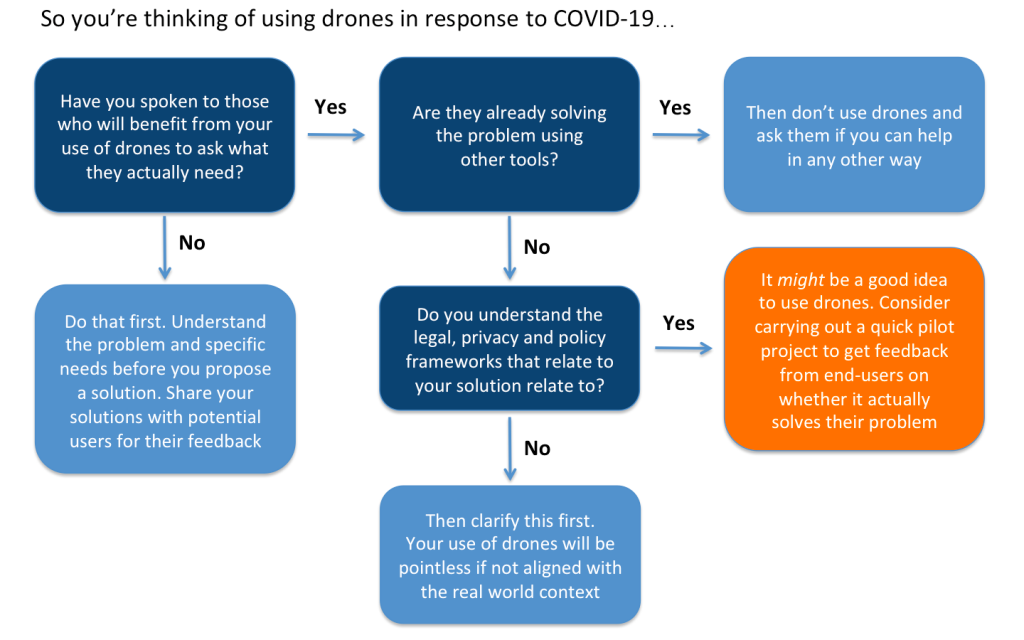
So You’re Thinking of Using Drones in Response to COVID-19? Why?
March 30th, 2020

We get it. We’ve been there. For many of us, responding to emergencies gives us a sense of purpose and control. It keeps us busy and focused. It shows we care and want to help. All of this is good and healthy. To paraphrase the philosopher Hannah Arendt, the greatest harm in the world is caused not by evil but apathy. So we should cherish the goodwill that springs during disasters. At the same time, this goodwill, this precious human emotion and the precious time it freely offers can have little to no impact. At worse, it can cause more harm than good.
So if you’re thinking of using drones in response to the COVID-19 pandemic, then we invite you to consider the following (adapted from Sharon O’Dea’s diagram):

If drones are unlikely to add value in the way that you had hoped (at least for the time being), then accept this. Leave the drones aside and ask if you can help in any other way. This is a key element of the Humanitarian Drone Code of Conduct and related Best Practices in Humanitarian Drone Missions. If responders have the time to speak with you and inform you that the best way you can help is by getting out of the way, then get out of the way. You may be able to add value by using drones during the next phase of the emergency. At this moment in the emergency, however, we’re seeing more and more drone-based initiatives and robotics-solutions that add very little to no clear value to the response. Some may even cause harm if they don't follow data protection and privacy guidelines or if they end up creating a false sense of safety. This doesn’t mean that drones cannot play a positive role in supporting the response to COVID-19, it simply means that more critical thinking is necessary before launching yet another drone project to tackle the pandemic.
Recent Articles

